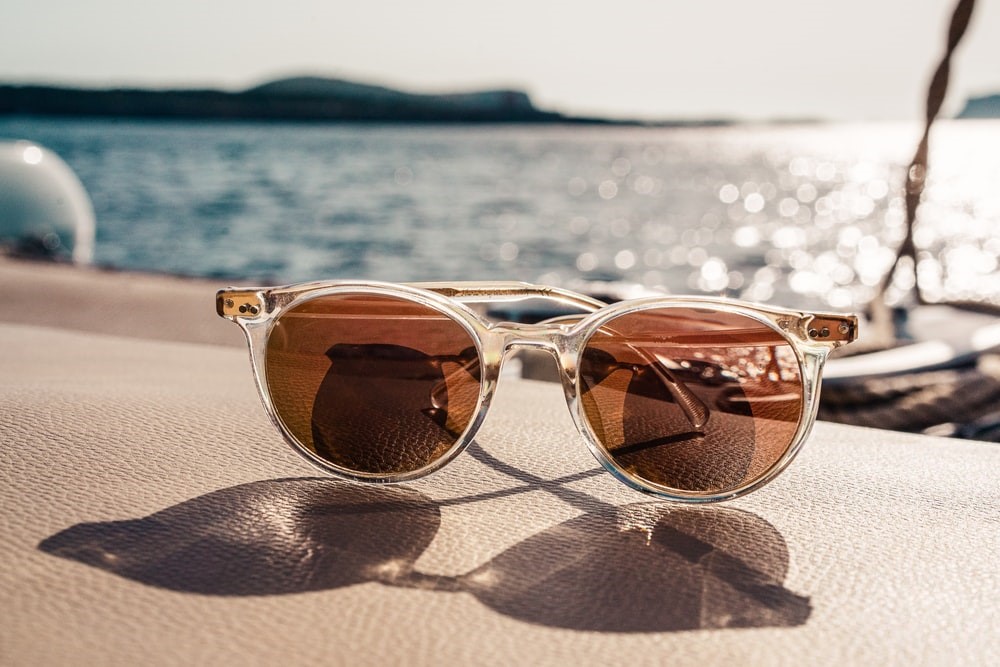Blue light hazards – what is that all about?
Blue light is a part of the visible light spectrum. Remember the rainbow? Blue light is in the region between green and ultraviolet.

Is blue light all bad?
All white light contains blue light. The purest form of white light is full (midday) sunlight on a clear day.
All light rays have energy, and some are able to penetrate biological tissues such as skin and the eyes to cause damage or influence body functions.
Blue light, similar to their ultraviolet (UV) cousins, can penetrate the deeper layers inside the eye and cause aging damage, such as cataracts and macula degeneration.
Blue light is crucial for:
- Accurate colour vision
- Influencing circadian rhythm: “day/night” cycle and ultimately, sleep-wake behavior, hormone secretion, cellular function, and gene expression.
So there’s the good blue light, which is also known as turquoise-blue (closer to the green spectrum), which helps our body to regulate our circadian rhythm.
The violet-blue spectrum, sometimes called the harmful blue light, has been found to cause damage to tissues when tested using animal cells in laboratory conditions.
How true is all that hype about blue light hazards?
Like any hazard, the degree of harm depends on the dose.
For example, we need oxygen to survive, but if the oxygen concentration is too high, it is toxic to our lungs, nervous system and eyes.
To date, it is not known how much blue light becomes harmful to human tissues. In experiments on animal eyes, the amount of blue light exposure far exceeds the brightness that our eyes can normally tolerate.
Much of the marketing hype about blue light hazards from digital devices is based on the assumption that the eyes are exposed to “excessive amounts” of blue light from digital screens, due to long hours of use.
Studies have measured the amount of blue light from digital devices that we are typically exposed to under normal conditions, and it is nowhere near the amount that we can receive in a few minutes under a noonday sun. This includes the blue light from white LED or fluorescent indoor lighting.
So unless you’re staring at a really bright, white screen all day long, the amount of blue light of any type is fairly small compared to when you’re outdoors during day light.
In other words, if you’re concerned about protecting yourself against blue light from digital devices, all the more you should have blue light protection when under the sun.

Is it still necessary to have blue light filters?
Blue light filters will be beneficial to those who
- Spend a lot of time under the sun. There is much more blue light from sun exposure, and since blue light and UV are different wavelengths, those who are not wearing sunglasses should have both UV and blue filters added to their eyewear.
- Had cataract surgery. Having lost the natural internal lens of the eye, which is also a crucial UV and blue light filter, external protection is needed.
- Are glare sensitive, particularly to white light (think of glare from screens, LED headlights, reflections from shiny surfaces…). Sometimes it may not be feasible to wear tinted eyewear, so having a blue filter will reduce the “whiteness” of light, making it a warm white as oppose to a cool white, and reduce discomfort from glare.
- Are at higher risk of macular degeneration eg elderly, smokers, diabetics, high myopia, genetic disposition.
Any disadvantages to blue filters?
Blue filters will cause some colour distortion – white will look yellowish, some colours will become more saturated.
Depending on the amount of blue light filtered, the effect on color perception will vary.
Blue filters may not be suitable for some occupations which require fine colour discrimination e.g. graphic designers, professional photographers, paint/ textile specialists, dentists etc.

Some blue filters are added as a coating on lenses to reflect some blue light away from the eyes. The lenses will appear to have bluish reflections and some people may find it cosmetically unappealing.
However, many of the new generation lenses have internal blue filters, and resemble standard clear lenses.
Are all blue filters the same?
As mentioned previously, not all blue light is harmful and needs to be filtered.
Proper blue filters will remove some of the blue in the harmful blue-violet spectrum, not the beneficial turquoise-blue.
There are also natural, internal protection against UV and blue light.
Read more here.